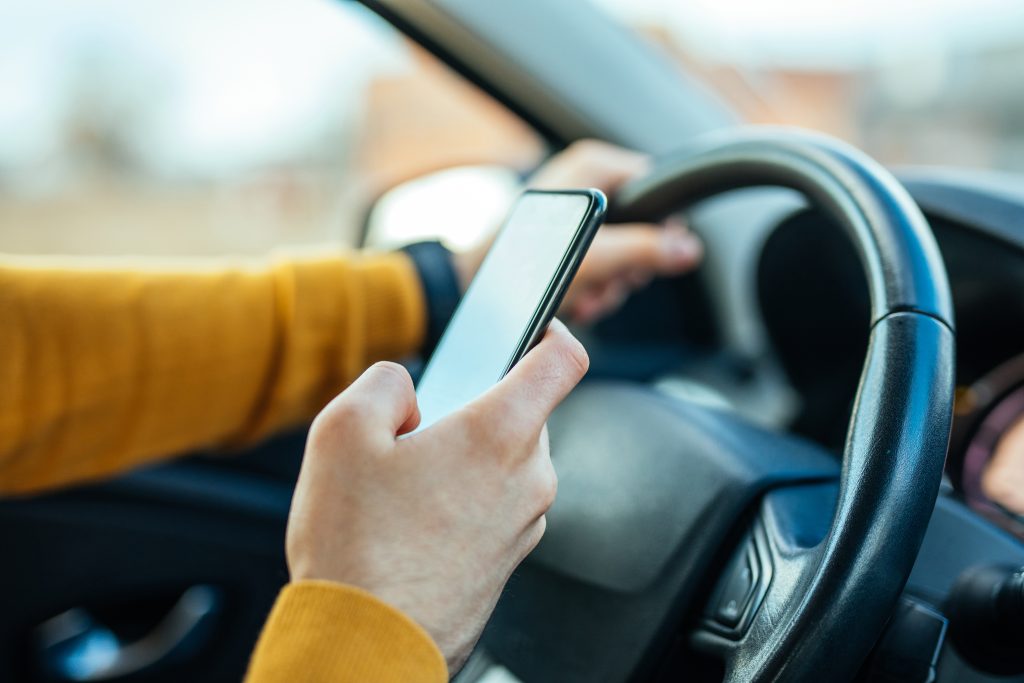Ignore the Phone (At Least While Driving…)

The National Highway Traffic Safety Administration has compiled a number of statistics on how distracted driving affects people nationwide. The Administration reports that a total of 3,522 people were killed in distracted driving accidents in the year 2021. This number is out of nearly half a million total accidents that involved distracted driving! Estimates are that millions of drivers are making use of their phones while driving during daytime hours.
Clearly, we have a major problem here.
DISTRACTED DRIVING CASES IN NEW YORK
New York has specific laws for traffic offenses that involve distracted driving. Under New York law, an officer may stop someone simply because they see them making use of a phone while driving. The offense itself may carry up to 5 points on a person’s license, and has very steep penalties for persons with provisional licenses or learner’s permits. In addition, these laws place significant restrictions on how operators of commercial vehicles may interact with their phones. The penalties for these offenses increase with each offense, and can potentially result in a loss of license if a person accrues enough points.
While these violations are generally considered small traffic offenses and handled in a municipal or state court, the acts that constitute these offenses are often the cause of accidents that result in severe injuries or death. Some minor injuries may be dealt with through New York’s “No Fault” system, but a person – or in some cases, a company – could alsobeheldcivillyliableforinjuries caused by a distracted driving accident. Often, the same evidence used in court to convict a distracted driver on a traffic offense can be used in a civil case to show that the distracted driver was negligent, and that his or her negligence contributed to the accident.
In addition to criminal and traffic matters, an individual who suffers serious injuries as a result of a distracted driving accident is often entitled to compensation. This can be broken
down loosely into economic and non- economic loss.
ECONOMIC LOSS
Economic damages are financial losses associated with an accident that a plaintiff can prove to a court. In distracted driving accidents, these often include medical costs such as hospitalization and/or surgery, as well as costs for follow-up treatment such as physical or occupational therapy. Future medical costs (to the extent that the treatment is reasonably likely) may also be estimated and included in available compensation.
Lost wages are another type of economic damage that typically accompany serious injuries or death from a distracted driving accident. In addition to the period of time an individual is out of work in the immediate wake of an injury, there might be additional missed work due to follow-up care or, in severe cases and cases involving a death, an inability to sustain employment into the future. This loss of income is an often substantial element of damages inalawsuitfollowingadistracted driving accident.
NON-ECONOMIC LOSS
Non-economic damages are losses that can be more challenging to translate into a dollar figure, yet can be substantial. These include categories such as physical pain and suffering, as well as mental anguish. Testimony from physicians, psychiatrists and other experts can help to attribute a monetary figure to these types of losses.
HOW DO WE STOP THIS EPIDEMIC?
Distracted driving is one of the things that keeps us, as parents, up at night. It has to stop. But how?
First, we educate. We believe that we must all make efforts to educate both teenagers and adults about the real world risks associated with distracted driving, because this is not limited to teenagers. Many of us have, at times, been guilty of looking at our phones when we should be focused elsewhere.
We have also joined the organization End Distracted Driving, and have made the commitment to reach as many individuals in New York’s Capital District as possible to address this problem through speeches, presentations,andleadership.
Second, we litigate. Unfortunately, the reality is that some people don’t learn from directed education alone, and need to see real world examples of the risks of distracted driving to appreciate the risks involved. To that end, we represent victims and their families who have been injured or killed by distracted drivers. We will use every tool available to change the behavior and culture surrounding distracted driving, and sometimes, that will mean making examples of those who choose to continue to take this unnecessary risk despite the clear evidence of the danger this behavior presents.
If you have questions about what you can do to help, visit our distracted driving page at www.ignorethephone.com.